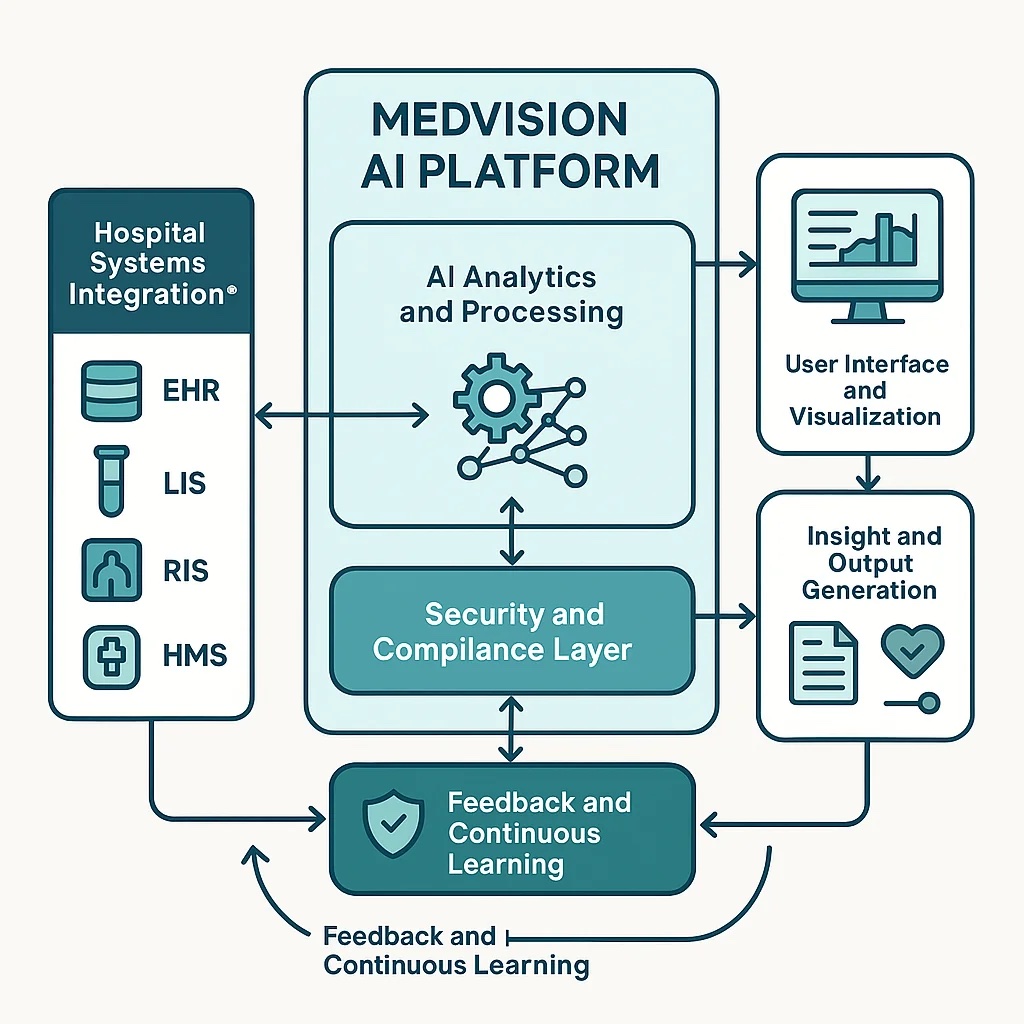HEALTHCARE CASE STUDY
Medical Imaging Analysis
Enhancing diagnostic accuracy and efficiency with computer vision AI.
The Client
Metropolitan Medical Center
Industry: Healthcare
A 750-bed teaching hospital that performs over 200,000 radiology procedures annually, serving a diverse patient population across urban and suburban communities.
The Challenge
The hospital faced significant challenges with their radiology workflow, including increasing image volumes, radiologist burnout, and maintaining diagnostic accuracy under time pressure. They needed a solution to assist radiologists in prioritizing critical cases and enhancing detection capabilities.
- Average wait time of 37 minutes for critical findings to be communicated to ordering physicians.
- Radiologists facing 22% annual increase in imaging volume without proportional staffing increases.
- 12% of subtle abnormalities were missed during initial readings, especially during high-volume periods.
- Inefficient prioritization of worklists leading to delayed diagnosis of time-sensitive conditions.
Our AI-Powered Solution
Businesses Alliance developed MedVision AI, a comprehensive computer vision platform designed to integrate seamlessly with the hospital's existing PACS (Picture Archiving and Communication System) and workflow. Our solution used deep learning algorithms to analyze medical images in real-time, providing decision support for radiologists.
- Multi-Modality Support: Compatible with CT, MRI, X-ray, and ultrasound images, providing consistent analysis across imaging types.
- Critical Finding Triage: Automatically flagged potential emergent findings such as hemorrhages, pneumothorax, and pulmonary embolism for immediate review.
- 3D Anomaly Detection: Advanced volumetric analysis for identifying subtle lesions that might be missed in traditional slice-by-slice review.
- Interactive Measurement Tools: AI-assisted measurement and characterization of findings to improve reporting consistency and accuracy.
- Follow-up Tracking: Automated comparison with prior studies to highlight changes and ensure appropriate patient follow-up.

MedVision AI platform architecture showing integration with hospital systems.
Implementation Journey
Phase 1: Discovery & Analysis
Conducted workflow analysis, stakeholder interviews, and HIPAA compliance assessment. Established project governance and secure data protocols. (Weeks 1-6)
Phase 2: Dataset Creation & Model Development
Curated anonymized training dataset with expert annotations. Developed and validated initial models with radiologist feedback. (Weeks 7-18)
Phase 3: Integration & Testing
Integrated with hospital PACS and electronic health record systems. Conducted extensive testing in a sandboxed environment with real-world cases. (Weeks 19-28)
Phase 4: Pilot Deployment & Expansion
Initial deployment in the emergency radiology department, followed by gradual rollout to all departments. Continued model refinement based on real-world performance. (Weeks 29-52)
Quantifiable Results
Reduction in Critical Finding Notification Time
From 37 minutes to 10 minutes on average
Increase in Detection Rate for Subtle Abnormalities
Validated through retrospective review
Improvement in Radiologist Efficiency
Measured by studies completed per hour
Additional Outcomes
- 93% of radiologists reported increased job satisfaction and reduced fatigue after implementation.
- Estimated annual cost savings of $2.1M through improved workflow efficiency and reduced callbacks.
- Hospital achieved a 15-point increase in patient satisfaction scores related to diagnostic services.
- Reduction in average length of stay for emergency patients requiring imaging by 2.3 hours.